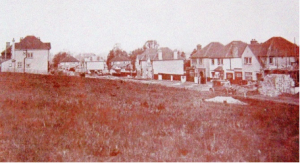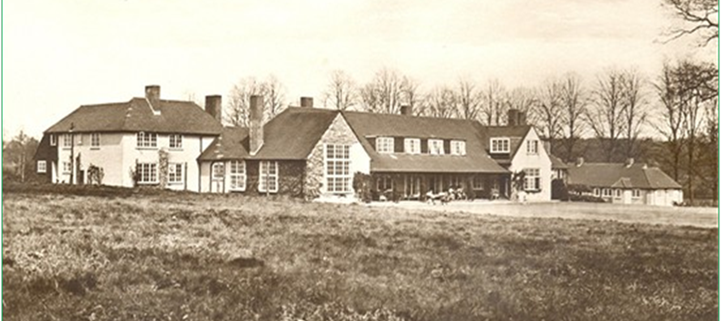The Saxon name for Oxhey meant a place where oxen were kept. The Oxhey estate was one of three given by the powerful King Offa of Mercia to the monks of St. Albans. According to legend Offa was moved to donate the estates and found the monastery as an act of atonement for killing Ethelbert, King of East Anglia, in AD 757. In 1529 Oxhey was among the first minor monasteries to be demolished by Henry VIII.
In 1604, Sir James Altham, Baron of the Exchequer under Elizabeth I and James I, bought the Manor of Oxhey. Sir James built Oxhey Place on the monastic site adding the family chapel in 1612 on the foundations of the monastic church.
In 1877 Oxhey Estate was sold in building lots and the area around Oxhey Place and the chapel being bought by Thomas F. Blackwell, of Crosse and Blackwell.
Photo – Our Oxhey*
Within the chapel the font, reredos (an ornamental screen covering the wall at the back of an altar), west doorway, roof, communion rails, chancel paving plus the Altham monument are all from the Seventeenth Century. The seating arrangements and other furnishings date from a restoration in 1897 but complement the earlier work maintaining its Jacobean atmosphere.
In 1704 the chapel was given a hipped roof and tiled along with a bellcote, which is a shelter for a bell. More work took place in 1712, when the reredos was painted white. From about 1799 no services were held, and the chapel used for storage. During 1852 Oxhey Chapel was restored as a church by Thomas Blackwell for the use of the inhabitants of Oxhey.
By the 1960’s the chapel was verging on dereliction. An appeal raised the equivalent of £126,000 and it was rescued. Restoration work changed the outward appearance, but the new roof is entirely in keeping with the old building.
The chapel was declared redundant in 1977. Fortunately, it was considered to be of sufficient historical and architectural value to be vested in the Churches Conservation Trust and its future is now secure.
Information from the Churches Conservation Trust and Wikipedia
*See Our Oxhey – www.ouroxhey.org.uk for further local historical Hertfordshire archives



